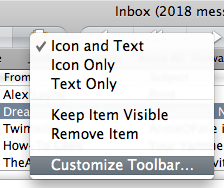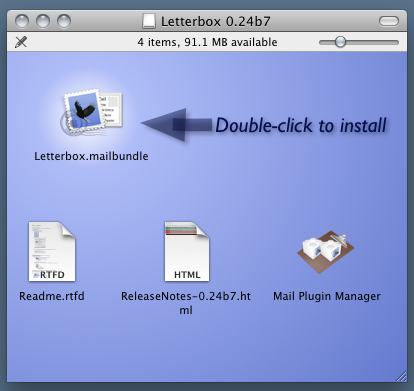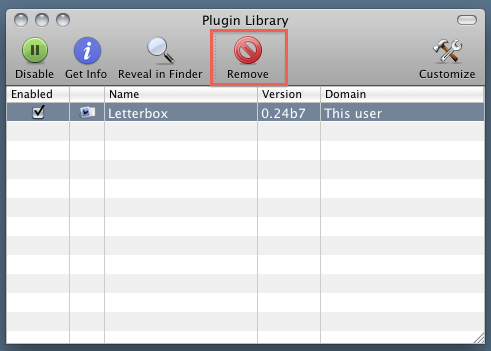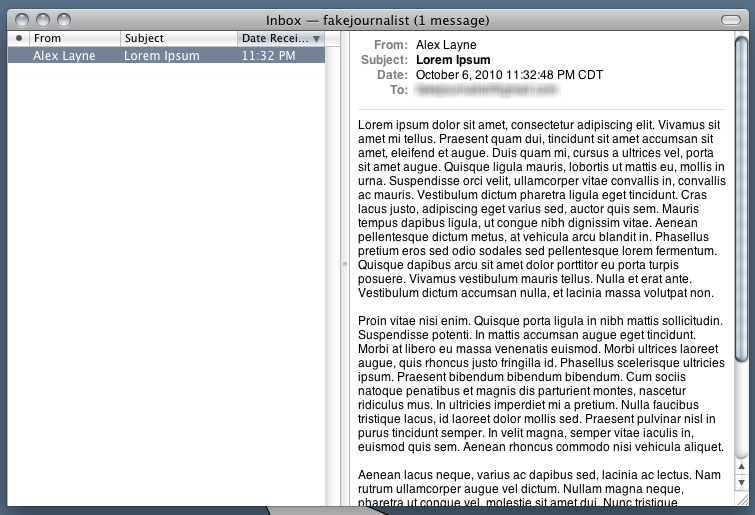This is not what a recovery is supposed to look like.
In Atlanta, the Bank of America tower, the tallest in the Southeast, is nearly a fifth vacant, and bank officials just wrestled a rent cut from the developer. In Cherry Hill, N.J., 10 percent of the houses on the market are so-called short sales, in which sellers ask for less than they owe lenders. And in Arizona, in sun-blasted desert subdivisions, owners speak of hours cut, jobs lost and meals at soup kitchens.
Less than a month before November elections, the United States is mired in a grim New Normal that could last for years. That has policy makers, particularly the Federal Reserve, considering a range of ever more extreme measures, as noted in the minutes of its last meeting, released Tuesday. Call it recession or recovery, for tens of millions of Americans, there's little difference.
Born of a record financial collapse, this recession has been more severe than any since the Great Depression and has left an enormous oversupply of houses and office buildings and crippling debt. The decision last week by leading mortgage lenders to freeze foreclosures, and calls for a national moratorium, could cast a long shadow of uncertainty over banks and the housing market. Put simply, the national economy has fallen so far that it could take years to climb back.
[Click here to check savings products and rates in your area.]
The math yields somber conclusions, with implications not just for this autumn's elections but also -- barring a policy surprise or economic upturn -- for 2012 as well:
• At the current rate of job creation, the nation would need nine more years to recapture the jobs lost during the recession. And that doesn't even account for five million or six million jobs needed in that time to keep pace with an expanding population. Even top Obama officials concede the unemployment rate could climb higher still.
• Median house prices have dropped 20 percent since 2005. Given an inflation rate of about 2 percent -- a common forecast -- it would take 13 years for housing prices to climb back to their peak, according to Allen L. Sinai, chief global economist at the consulting firm Decision Economics.
• Commercial vacancies are soaring, and it could take a decade to absorb the excess in many of the largest cities. The vacancy rate, as of the end of June, stands at 21.4 percent in Phoenix, 19.7 percent in Las Vegas, 18.3 in Dallas/Fort Worth and 17.3 percent in Atlanta, in each case higher than last year, according to the data firm CoStar Group.
Demand is inert. Consumer confidence has tumbled as many are afraid or unable to spend. Families are still paying off -- or walking away from -- debt. Mark Zandi, chief economist of Moody's Analytics, estimates it will be the end of 2011 before the amount of income that households pay in interest recedes to levels seen before the run-up. Credit card delinquencies are rising.
"No wonder Americans are pessimistic and unhappy," said Mr. Sinai. "The only way we are going to get in gear is to face up to the reality that we are entering a period of austerity."
[High-Paying Jobs For Moms]
This dreary accounting should not suggest a nation without strengths. Unemployment rates have come down from their peaks in swaths of the United States, from Vermont to Minnesota to Wisconsin. Port traffic has increased, and employers have created an average of 68,111 jobs a month this year.
After plummeting in 2009, the stock market has spiraled up, buoying retirement accounts and perhaps the spirits of middle-class Americans. As a measure of economic health, though, that gain is overstated. Robert Reich, the former labor secretary, notes that the most profitable companies in the domestic stock indexes generate about 40 percent of their revenue from abroad.
Few doubt the American economy remains capable of electrifying growth, but few expect that any time soon. "We still have a lot of strengths, from a culture of entrepreneurship and venture capitalism, to flexible labor markets and attracting immigrants," said Barry Eichengreen, an economist at the University of California, Berkeley. "But we're going to be living with the overhang of our financial and debt problems for a long, long time to come."
New shocks could push the nation into another recession or deflation. "We are in a situation where our vulnerability to any new problem is great," said Carmen M. Reinhart, a professor of economics at the University of Maryland.
So troubles ripple outward, as lost jobs, unsold houses and empty offices weigh down the economy and upend lives. Struggles in Arizona, New Jersey and Georgia echo broadly.
Florence, Ariz.
In 2005, Arizona ranked, as usual, second nationally in job growth behind Nevada, its economy predicated on growth. The snowbirds came and construction boomed and land stretched endless and cheap. Then it stopped.
This year, Arizona ranks 42nd in job growth. It has lost 287,000 jobs since the recession began, and the fall has been calamitous.

©Joshua Lott for NY Times |
| The Wheaton family has been hurting since Todd Wheaton's hours were cut. |
Renee Wheaton, 38, sits in an old golf cart on the corner of Tangerine and Barley Roads in her subdivision in the desert, an hour south of Phoenix. Her next-door neighbor, an engineer, just lost his job. The man across the street is unemployed.
Her family is not doing so well either. Her husband's hours have been cut by 15 percent, leaving her family of five behind on water and credit card bills -- more or less on everything except the house and car payment. She teaches art, but that's not much in demand.
"I say to myself 'This can't be happening to us: We saved, we worked hard and we're under tremendous stress,'" Ms. Wheaton says. "My husband is a very hard-working man but for the first time, he's having real trouble."
Arizona's poverty rate has jumped to 19.6 percent, the second-highest in the nation after Mississippi. The Association of Arizona Food Banks says demand has nearly doubled in the last 18 months.
Elliott D. Pollack, one of Arizona's foremost economic forecasters, said: "You had an implosion of every sector needed to survive. That's not going to get better fast."
To wander exurban Pinal County, which is where Florence is located, is to find that the unemployment rate tells just half the story. Everywhere, subdivisions sit in the desert, some half-built and some dreamy wisps, like the emerald green putting green sitting amid acres of scrub and cacti. Signs offer discounts, distress sales and rent with the first and second month free.
Discounts do not help if your income is cut in half. Construction workers speak of stringing together 20-hour weeks with odd jobs, and a 45-year-old woman who was a real estate agent talks of her job making minimum wage bathing elderly patients. Many live close to the poverty line, without the conveniences they once took for granted. Pinal's unemployment rate, like that of Arizona, stands at 9.7 percent, but state officials say that the real rate rises closer to 20 percent when part-timers and those who have stopped looking for work are added in.
[Best Jobs in America For Pay, Growth]
At an elementary school near Ms. Wheaton's home, an expansion of the school's water supply was under way until thieves sneaked in at night and tore the copper pipes out of the ground to sell for scrap.
Five miles southwest, in Coolidge, a desert town within view of the distant Superstition Mountains, demand has tripled at Tom Hunt's food pantry. Some days he runs out.
Henry Alejandrez, 60, is a roofer who migrated from Texas looking for work. "It's gotten real bad," he says. "I'm a citizen, and you're lucky if you get minimum wage."
Mary Sepeda, his sister, nods. She used to drive two hours to clean newly constructed homes before they were sold. That job evaporated with the housing market. (Arizona issued 62,500 housing permits several years ago; it gave out 8,400 last year.)
"It's getting crazy," she says, holding up a white plastic bag of pantry food. "How does this end?"
You put that question to Mr. Pollack, the forecaster. "We won't recover until we absorb 80,000 empty houses and office buildings and people can borrow again," he says.
When will that be?
"I'm forecasting recovery by 2013 to 2015," he says।
The housing market in this bedroom community just across the border from Philadelphia never leapt to the frenzied heights of Miami Beach or Las Vegas. But even if foreclosure notices are not tacked to every other door, a malaise has settled over the market. Home prices have fallen by 16 percent since 2006, and houses now take twice as long to sell as they did five years ago.
That's enough to inflict pain on homeowners who need to sell because of a job loss or drop in income. Some are being forced to get rid of their houses in short sales, asking less than they owe on a mortgage. As of last week, 10 percent of all listings in this well-tended suburb were being offered as short sales.
Chrysanthemums bloomed in boxes on the porch of one of those homes as a real estate broker unlocked the front door. In the kitchen, children's chores were listed neatly on an erasable white board. Dinner simmered in a Crock-Pot on the counter.
There were few signs of the financial distress that prompted the owners to put their four-bedroom colonial on the market for less than they paid five years ago.
The colonial's owners, James and Patricia Furrow, bought near the top of the market in 2005 for $289,900. Mr. Furrow, 48, retired in July after 26 years as a corrections officer and supplements his pension with work as a handyman. But his income is spotty, and his wife, who works in a school cafeteria, does not earn enough to cover the mortgage on the house where they live with their three children.
They have already missed a payment; they want to sell the house in hopes their lender will forgive the shortfall between their loan balance and the lower sale price. They are asking $279,900.
"When we did buy, the market was still moving pretty good," said Mr. Furrow. "Then it got to the point where people said it is not going to last. And of course it didn't last."
Some of the homes being offered at distressed prices are dragging down prices for less troubled homeowners who hope to sell. And with foreclosures now in disarray, the market could be further weakened. "Even someone who is trying to sell a normal, well-maintained house is at the mercy of these low prices," said Walter Bud Crane, an agent with Re/Max of Cherry Hill.
So the houses sit, awaiting offers that rarely materialize. According to Mr. Crane, the average number of days that homes sit on the market has nearly doubled, to 62 this year from 32 in 2005. Buyers are chary, not sure if their jobs are secure. Open houses draw sparse crowds.
In Camden County, where Cherry Hill sits, unemployment is near 10 percent. Several large employers have closed or conducted huge layoffs, and others have pruned hours. With Gov. Chris Christie reining in spending, government workers are jittery.
Real estate agents say it has rarely been a better time to buy: interest rates are at record lows, house prices have fallen and the selection is large.
Tara Stewart-Becker, a 28-year-old financial services manager, said she and her husband would love to buy a sprawling fixer-upper just three blocks from the narrow colonial they purchased four years ago in Riverton, which backs onto the Delaware River.
But a bad kitchen flood and a loan to pay for repairs has left Ms. Becker and her husband, Eric, owing more on their mortgage than the house is currently worth. Even though the couple make far more money than they did when they bought their house and could afford a larger loan and renovations, they cannot sell.
"I would gladly take a new mortgage and stimulate the economy for the rest of my life," Ms. Becker said.
"Unfortunately, there isn't anything that a government or a bank can do," she added. "You just have to settle for less and wait."
Atlanta
Long fast-growing, no-holds-barred Atlanta has burned to the ground before, figuratively and in reality, and each time it was a phoenix rising. But this recession has cut deeper than any since the Great Depression and left Atlanta's commercial and high-end condo real estate in an economic coma.
Over all, assuming a robust growth rate, industry leaders say it could take 12 years for Atlanta to absorb excess commercial space.
"That one -- see it?" Alan Wexler points to a gleaming blue tower as he drives. "A Chicago bank took it over six months ago. Sold at a 40 percent discount."
"And over there" -- he juts his chin at a boarded-up hotel topped by a Chick-fil-A fast-food restaurant crown. "That was going to be a condo. They just shut it down and walked away."
Mr. Wexler, a wiry and peripatetic real estate data analyst, describes it all on a drive down Peachtree Road, Atlanta's posh commercial spine.
He starts in the Buckhead neighborhood, which has more than two million square feet of vacant commercial space. A billboard outside one discounted condo tower promises "New Pricing from the $290s!" There are towers half-empty and towers in receivership. Office buildings that once sold for $85 million now retail for $35 million.
[How to Be a Better Decision-Maker]
Approaching downtown, Mr. Wexler hits the brakes and points to an older, white marble building. "See that one? It's the Fed Reserve. That's where they sit, look, sweat and wonder: How did we get into this mess?"
That's a question much on the minds and lips of residents.
The commercial vacancy rate in Buckhead is near 20 percent, and the Atlanta region has added jobs only at the low end.
Mike Alexander, research division chief for the Atlanta Regional Commission, posed the question: "When do we start to add premium jobs again?"
Lawrence L. Gellerstedt III, chief executive of Cousins Properties, sits in an office high atop an elegant Philip Johnson tower, with a grand view of the Atlanta commercial corridor running north. He does not see improvement on the horizon.
"We're all wondering what gets the economy producing jobs and growth again," he says. "Atlanta always was the fair-haired child of real estate growth and now, it's 'O.K., poster boy, you're getting yours.'"
Small banks are a particular disaster, 43 having gone under in Georgia since 2008. (Federal regulators closed 129 nationally this year, up from 25 last year.) Real estate was the beginning, the middle and the end of the troubles. In one deal, dozens of Atlanta banks invested in Merrill Ranch, a 4,508-acre tract of desert south of Phoenix.
The deal imploded and took a lot of banks with it.
"No one was demanding documents or reading the fine print, and mortgage banks were fat and happy," recalls John Little, a developer. "Well, that train couldn't keep running."
He has a ringside seat on this debacle, as he sits in the office of a handsome condo complex he built in west Atlanta. He faced price discounts so deep that he decided to rent it instead.
Nationwide banks have no interest in lending to local developers, and the regional banks are desperate for cash and calling in their loans.
Mr. Little got lucky; he bought out his loan and kept his property. "Most of my generation of builders has gone under," he said. "It's still spiraling out of control."










 Why is iTunes sync so slow? So painfully and horribly slow? The worst part is when it tells you that it’s backing up your iPod, which seems to hang half the time.
Why is iTunes sync so slow? So painfully and horribly slow? The worst part is when it tells you that it’s backing up your iPod, which seems to hang half the time. If you’ve ever wanted to be able to download Google Maps data for offline use, you should check out gmapcatcher, a cross-platform application that caches map segments locally.
If you’ve ever wanted to be able to download Google Maps data for offline use, you should check out gmapcatcher, a cross-platform application that caches map segments locally.





















.gif)
.gif)







